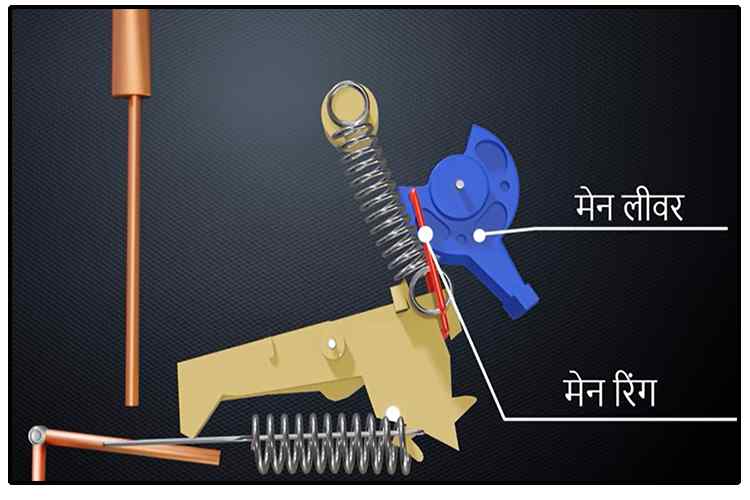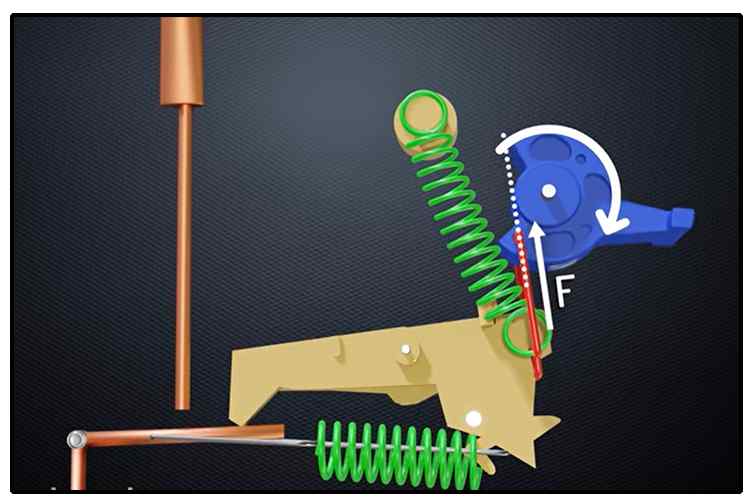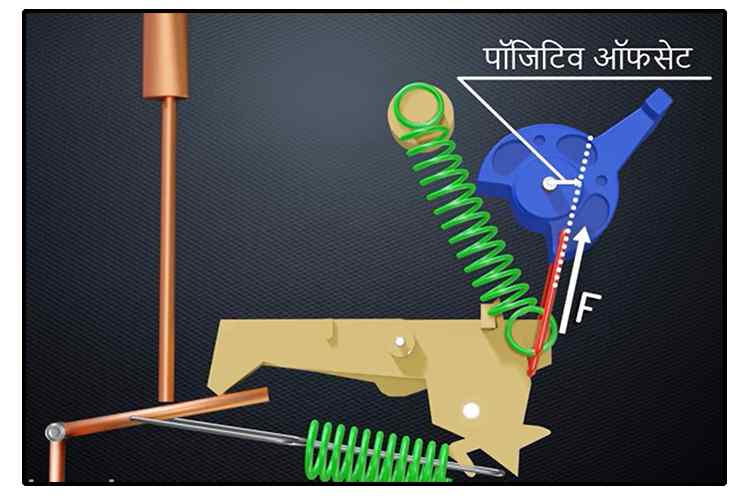MCB Full Form or MCB We are going to discuss this topic in this article. In MCB Meaning in Hindi, the full name of MCB is Miniature Circuit Breaker. In this article we will know how Full Form of MCB works? What are the types of MCB?
On WireKhoj you find such great topics that too based on Electricity. And even today we are going to present a new topic based on electricity in front of you. Knowing this topic, information about your MCB Full Form will emerge.
Table of Content
What is MCB
As we have known above, the full name of MCB is Miniature Circuit Breaker. It is a kind of circuit breaker which breaks the circuit. We can use it in homes, factories etc. That is, this MCB Full Form is used everywhere.
In the beginning, instead of MCB, Fuse was used, but in today’s time, instead of Fuse, now MCB meaning in Hindi is used which is also true.
What is MCB?
It’s a small and fun device known as an MCB. It protects you and your home from power loss. This breaker saves you two difficulties. Which we have described below.
- Short Circuit
- Overload
1.Short Circuit
In this case Full Form of MCB trips in working time of more than 3 milliseconds and isolates the internal connection. We try to know how this small smart device detects the current in such a long time.
In the old days, a simple device called a Fuse was used to prepare a low melting point. It was used to protect homes. In both the fault conditions mentioned earlier, the current increases more.
Due to which overheating occurs, and the wire gets fused. Or the circuit breaks. Every time the fuse got blown, we had to replace it ourselves. The darkness was a relief until you did.
It was because of this commonly occurring problem that Circuit Breaker was discovered.
What is Circuit Breaker?
It is an automatic ON/OFF mechanism that keeps one side of the wire fixed and the other side moving. During an electric fault, the circuit opens so that the MCB design does its job.
When the electric fault is over, we turn it on ourselves. Before knowing about the design of MCB, we should pay a little attention to the direction of current.
How does MCB Works
MCB Full Form gets activated in working time less than 3 milliseconds which is a lot more work than Half Cycle Time Period of AC Current. So during this whole analysis it will be good to show the flow of current in the same direction.
Now the question is how does this system recognize the existence of an electric fault. The answer is that there are some things about it about which we will now know.
Sensing Element: It contains Sensing Elements which activates the Trigger Mechanism. Let us first see how we can design a triggering mechanism.
Triggering Mechanism: A driving mechanism to achieve this is shown in the figure below. This mechanism consists of a liver to which a Rectangular Ring is attached. As shown in the picture below.
The Rectangular Ring is attached to two springs and a liver. In this position, both are in the Spring Neutral State. When the lever is moved upwards, the lower spring is compressed.
At the same time, the upper spring expands. The force of both these sprigs is eventually transferred to the liver through the Rectangle Ring. And this force is in the upward direction. As you can see initially the Rectangle Spring is set at a negative offset from the center of the lever.
The torque produced by the force acting on the Rectangle Ring is in the clockwise direction. If you shorten the lever in this direction as shown in the picture, it will bring the Clock Wise Torque Lever back to its same position.
If you raise the lever further, did you notice something strange about the offset distance. It suddenly becomes positive. This means that after a critical limit, this torque is completely counter-clockwise.
When the MCB is turned on, the position of the lever is as shown in the figure. The structure of the MCB will block the lever from rotating further clockwise. Now an External Trigger makes a slight turn of the lever, then the torque of the lever suddenly becomes clockwise.
The circuit opens quickly without any external force. Here, as soon as the operator pushes the lever down, how does this mechanism actually operate in Ultra-Slow Motion.
After a small angle the lever generates its own torque. And there is no need to apply this external force, now there is only one question, how can we generate this small Input Trigger or Input Motion when there is a fault?
The best answer to this is with the help of a separate electromagnet. It generates a magnetic field according to the electric current happening near the coil. As the current changes the magnetic field becomes more strong.
In the case of a short circuit, the amount of current increases up to a thousand times in a few milliseconds. The result of this is that a very strong magnetic field is generated. Inside this electromagnetic, an iron cylinder and a pin are placed on a spring, which is slightly offset from the center.
The strong magnetic field pulls the cylinder down and thus pushes the pin. The small movement of the pin is placed in the input of that mechanism and due to this the circuit gets scratched.
Like we discussed above. You must be wondering why this cylinder does not attract downwards when normal current flows. This is because the force in ordinary current flow is not high enough to overcome the tension of the spring.
Whereas during a short circuit, the current reads 100 such properties as compared to ordinary current. And this force becomes so much that the circuit itself gets tripped.
The danger of this fault is also not over, as soon as the contacts are opened, the flow of current does not stop. The value of fault current is very high and due to this air discharge can happen. Which means that the current can also flow through the air.
It is very spectacular to look at but has a dangerous arc. A component is used to extinguish this arc called an arc runner or arc shoot. The arc shoot is the arrangement of parallel plates.
Which are arranged at small intervals, as soon as the contacts are separated this heavy fault current which is flowing like an arc, raises the temperature very much. which may cause damage.
Therefore it is necessary to eliminate this arc. Resistance changes by increasing the length and works from the area. Here we need an increased resistance to the current passing through the air. Due to which the distance between the contact points is kept more after opening the circuit.
Additional Read : Top 30 Electrical Symbols
This is because the air is hot. This arch rises upwards, later this arch is divided into smaller parts so that its area is reduced. The arc ends when there is zero current with increased resistance.
2. Overloading
Now let’s see that MCB Details in Hindi How does another type of fault prevent an Overload Condition? Overload happens when you use too many Uplines at the same time. Because all these Uplines are Parallel Connect in our homes.
In such a situation that the electric current increases. This is also a dangerous scenario. Which we should avoid. During a short circuit the current increases by 10 to 100 times, but in an overload it increases only by 2 to 5 times.
You must be feeling that this problem can be solved by using a different electromagnetic with less operating. But it cannot happen. Let’s know why?
The problem with this new coil in overload condition is that it will activate even if only up is triggered by each other uplines.
Additional Read : Electrical Circuit
For example, a Fluro cent tube has an inrush current during start-up that lasts for about 10 milliseconds. And after that it becomes normal. Therefore, using a low rated Electro Magnate will trip the breaker without any reason even after starting the electric supply.
Bai Metallic Strip
A great option to solve the overload condition is by metallic strip. This sensor is a bit slow and offsets the inrush current as it is only a relief for 10 milliseconds.
If the overload current lasts for 2 seconds or more, it trips the MCB full form. As the current increases in the bi-metallic strip, it starts to bald a little due to the heat.
This event pushes the C-Shaped lever then the main lever down and they open the contacts again. With the help of this screw, the value of that current can be changed. In which the bi-metallic strip should operate. It is adjusted by the manufacturer itself.
Additional Read : Multimeter
With this top-notch device, you are protected from electrical hazards. Apart from MCB, we have different types of breakers designed for different types of faults. which is below.
- RCD
- ELCB
- MCCB
MCB Price
| Sr. No. | Product Name | Price |
| 1 | Havells 32A Single Pole MCB – MCB Price | Rs. 145 |
| 2. | Anchor by Panasonic 98006 Polycarbonate 1 Pole UNO Series MCB, 32 Ampere | Rs. 160 |
| 3. | Anchor by Panasonic 98018 UNO Series 10 Ampere Dual Pole C Curve MCB | Rs. 659 |
| 4. | Schneider Polycarbonate Acti 9 32-A 1-Pole MCB | Rs. 240 |
| 5. | Havells DHMGBSPF010 PVC Plastic 10A MCB SP B Curve – MCB Price | Rs. 125 |
Conclusions
In this article we discussed you about MCB Full Form and how it works. After knowing about all these, hope you must have understood about MCB Details and MCB Full Form in Hindi.
If you liked this article of ours, then please do share this article with your friends and family.
FAQ with MCB Full Form
Q.1. What is the Work of MCB?
It is a kind of circuit breaker which breaks the circuit. We can use it in homes, factories etc. That is, this MCB is used everywhere.
Q.2. Why is Mcb used in homes?
It’s a small and fun device known as an MCB. It protects you and your home from power loss.
Q.3. What is the Full Form of MCB?
The full name of MCB is Miniature Circuit Breaker.
Q.4. How many types of MCB are there?
There are mainly 5 types of MCB which are given below:
- Type – B MCB
- Type – C MCB
- Type – D MCB
- Type – K MCB
- Type – Z MCB
Q.5. What is the normal price of MCB?
Its price generally depends on the MCB, what type of MCB is. It ranges from Rs.130 to Rs. Can be up to 800.





![[FAQ] Electrician Jobs Interview Questions | Electrician Jobs Interview 8 electrical interview questions](https://wirekhoj.com/wp-content/uploads/2021/11/sigmund-rnMRwtBY_nU-unsplash-300x300.jpg)
![Top 30+ [Most Popular] Electrical Symbols in World | Wirekhoj India 9 electrical symbols](https://wirekhoj.com/wp-content/uploads/2021/06/alexandre-debieve-FO7JIlwjOtU-unsplash-300x300.jpg)